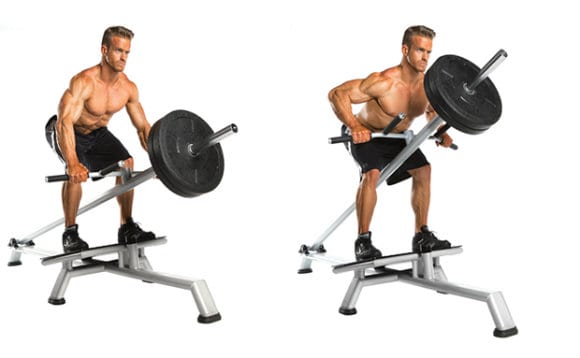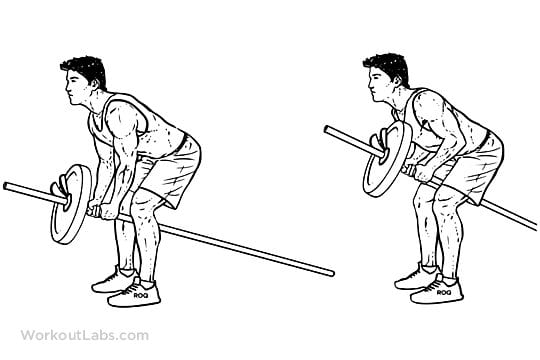By the healthiergang writer , personal trainer.
T-Bar
As already explained in previous articles, the back musculature is one of the largest in our body and is of fundamental importance as the greater the musculature in this area, the better our life will be.
There are many exercises to develop the strength, hypertrophy and volume of the back muscles. The best known exercise that, better than the others, completely engages this area of our body is the rowing machine.
There are countless variations of this exercise:
- barbell rowing (classic exercise that everyone knows)
- barbell rower on bench
- rowing handlebars
- dumbbell rowing bench
- single handlebar row
- rower with kettlebell
- rematore with sendbag
- oarsman at the cable
- single rower to the cable
- rower T Bar
How is it done?
Let's now pass to explain the rower with the use of the "T Bar".
- In this exercise, the main muscles involved are the dorsal, rotunda, posterior head of the deltoid and, secondarily, the rhomboid, trapezius, lumbar and biceps.
- For a correct execution, stand upright, torso bent.
- It is essential to keep the physiological curvatures, knees slightly bent.
- Grasp the T Bar with the palm of your hand facing the ground.
- Lift the load by pulling with the arms, keeping the elbows detached from the hips until reaching the abdominal area.
- Hold the contraction for a second and return to the starting position.
If high loads are used, it is possible to accompany the movement of the arms with the rest of the body.
This exercise is very demanding for the whole set of back muscles, but mainly for the great back as occurs in the case of using the classic rowing machine with a barbell.

Advantages and disadvantages
The advantage of using the T Bar lies in the fact that, since the effort is made in a more oblique direction, the position is more comfortable and less aggressive for the lumbar area and for the vertebrae in general.
If you do not have the appropriate T Bar, you can use an Olympic barbell.
It is sufficient to place one of the two ends on the ground, so that it cannot move and in the opposite end insert the discs and a triangle handle where you go to pull. The disadvantage of using this variant is that, using very large discs, you hit the body before allowing the end of the movement itself, limiting the result.
To overcome this problem, it is sufficient to use large discs with a smaller diameter.
Common mistakes
The most mistakes made in this exercise are:
- swing with the body
- arch the lumbar spine
- complete the path in an incomplete way
- assume other incorrect, potentially harmful positions
variants
Possible variations to this exercise are:
- Open arms rowing: the muscles involved are large dorsal, round, posterior head of the deltoid, romodoidei, trapezius. With this variation (very similar to the classic rower, but with a slightly wider grip) it is possible to emphasize more the work of the upper back area. The disadvantage of the wider grip is the shorter run path.
- Single hand rowing: also in this case the main muscles involved are dorsal, teres, posterior deltoid. The method of execution is similar to that of the previous variant, but in this case the bar is either completely to the right or completely to the left, and the movement will be performed first with one arm then with the other.
The primary advantage of this variant is that it is possible to emphasize the muscular work in a specific area of the back (right or left side according to the arm used).
Obviously, a lower load will have to be used for two reasons; the first is the use of a single arm, the second for the position that the body assumes during the execution.
To avoid overloading the lumbar area, it is possible to place the hand that is not working either on a support or directly on the knee.

Types of T-Bars
- T-Bar with footrest;
- T-Bar with footrest and chest rest; it is excellent for considerably reducing the load on the lumbar level and also allows to better isolate the work of the great dorsal (recommended especially for inexperienced athletes who have not yet complete mastery of the exercise);
- Free T-Bar, where there is neither a torso platform nor a chest rest (present in most gyms).
As previously mentioned, if you don't have any of these types of T Bars available, you can use an Olympic barbell and a triangle handle.
Conclusion
Last tip.
Don't forget the importance of doing a complete and balanced workout! The front part is trained as much as the back part is trained.
Unfortunately, one of the most common mistakes made in the gym is to focus more work on the front muscles of the body and less on the back.
Remember that a healthy back is the mirror of a healthy life!


























